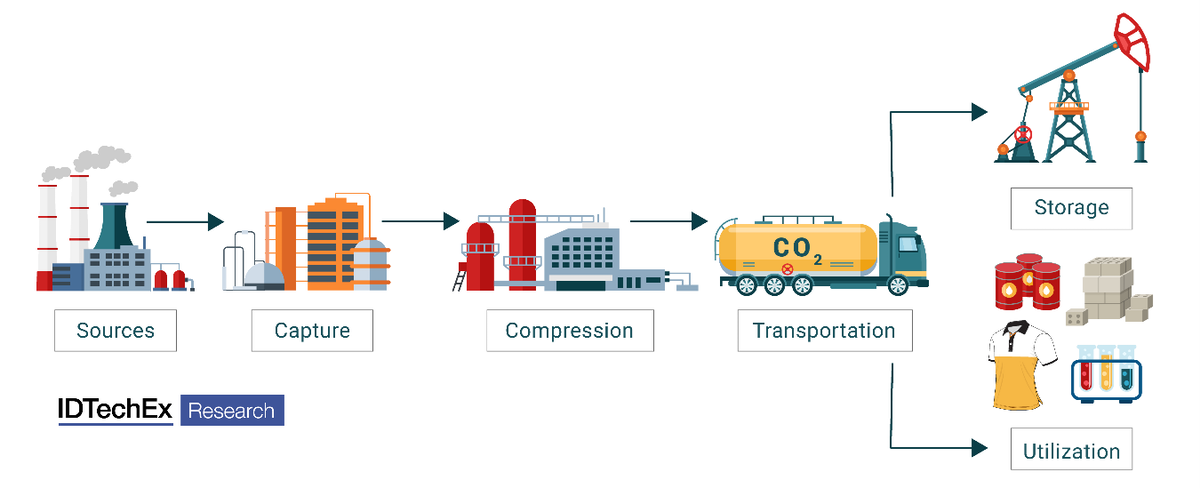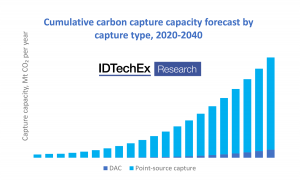Carbon Capture: How Well Does It Work?

After IDTechEx ‘Carbon, Capture, Utilization and Storage 2021-2040’ report was released, Housing Industry Leaders analyses the implications of carbon capture and whether it can really help in the fight against climate change.
For a long time, carbon capture has been seen as an invaluable way of reducing climate change. With the ability to reduce carbon dioxide emissions by over 90% when attached to fossil fuel power stations and industrial emitters, its potential is undeniable.
But is this enough?
The Paris Agreement has set a 2-degree warming goal and capturing CO2 from power stations may not go far enough in the prevention of some of the most catastrophic impacts of global warming.
In addition to the aims set by the Paris agreement, the Intergovernmental Panel on Climate Change (IPCC) outlined a series of scenarios, most of which found that carbon capture on its own is not enough.
This was highlighted in the report: “Outside of bioenergy with carbon capture and storage (BECCS), which remains highly unproven, this is not possible with point source carbon capture.”
Direct air capture to keep temperatures down
Offering a solution to this problem, the report discussed how direct air capture (DAC) technology can be the next big step towards keeping the earth cool. This tech uses carbon capture techniques to strip carbon dioxide from the atmosphere.
“The DAC process is like an artificial tree; ambient air enters the DAC device, and a range of chemical and physical processes extract the CO2 before the rest of the air is released back into the atmosphere. The process is much more efficient than planting trees, requiring less land and fewer resources.”
The DAC process is like an artificial tree; ambient air enters the DAC device, and a range of chemical and physical processes extract the CO2 before the rest of the air is released back into the atmosphere
Evidence of this is in Switzerland where this DAC technology can remove 900 tonnes of CO2 per year which amounts to 36,000 trees.
Dr Michael Dent, the author of the report, explained the technical aspects of DAC. “For CO2 separation, liquid solvents – usually amine-based or caustic – are commonly used to absorb the CO2 from the ambient air.”
First, large fans push ambient air through a filter containing a substance that physically or chemically binds the CO2, with the CO2-free air being released back into the environment. For example, sodium hydroxide solution will react with CO2 to form a stable sodium carbonate precipitate. This carbonate can then be heated to produce a high purity gaseous CO2 stream, which also enables the regeneration of the sodium hydroxide.

A generalized process for direct air capture. Source: IDTechEx
He continued: “Alternatively, solid sorbents can be used via a chemisorption mechanism, with heat and vacuum being used to desorb the CO2 and enable reuse of the sorbent. To date, the most successful processes for capturing CO2 from the ambient air are based on low-temperature solid sorbents and aqueous alkaline solutions.”
Early days for new technology
While there is a sense of real optimism around the deployment of DAC, the report also raised some real concerns. It stated: “The technology still faces some serious hurdles before it can reach the scale where it has a meaningful impact on climate change. The main issue now is the cost of the technology.”

IDTechEx forecasts that DAC will gain a growing share of global CO2 capture capacity over the next few decades. Source: IDTechEx report
Despite these concerns, direct air capture is undeniably exciting Even though it is still very much in its infancy. Research from IDTechEx has predicted that DAC will significantly increase carbon capture capacity, totalling 1,265 megatonnes by 2040.

